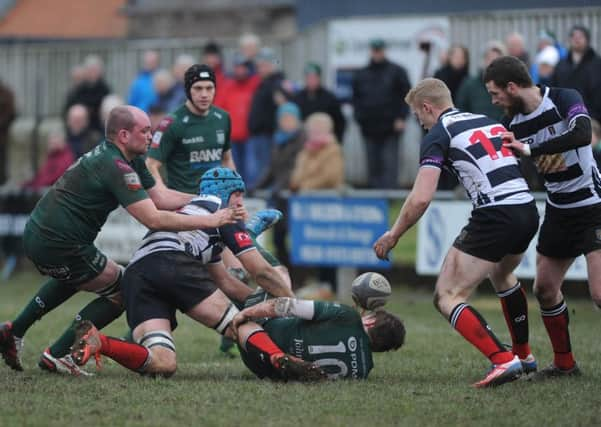Putting your body on the line comes at a price


Injuries are a part of rugby and anyone who has played the game long enough will have experienced a level of physical pain over the course of their career.
For some the uncomfortable creaks and aches don’t last for long and they are back on the field without much trouble but for an increasingly unlucky number rugby is taking more and more away from the game.
Advertisement
Hide AdAdvertisement
Hide Ad“You either have to be a physical monster or technically gifted to play rugby at a high level today,” said 21-year-old former Hawick full-back, Matthew Douglas, who was forced to retire from rugby this season following repeated groin, hip and pelvic injuries picked up over a 10-year playing career.
Like so many players, Douglas was hoping he would be the invisible one.
“The doctor basically sat us down and told us that if I was to continue playing it would completely knacker us. I was in with my mum and at time and the two of us looked at each other and I kinda came to the realisation that the game was taking far too much from us and I needed to stop.”
So what’s one more season? Or more hit? From that perspective it’s nothing. Looking from the outside, you can almost understand why most players aren’t sprinting away from the brutal game they grew up playing.
Advertisement
Hide AdAdvertisement
Hide Ad“Rugby is not an easy sport, it can take so much away from you but at the same time it was what I always wanted. Playing for long enough you eventually start to see guys you grew up playing with eventually walk away because they basically can’t keep up with the physical nature the game has evolved into.”
Douglas knew the injury possibilities when he started playing in school and is fully aware the toll the game has taken on him but sticking with rugby, even through all the pain, wasn’t a tough decision.
“Ever since I was a young boy I wanted to play for Hawick and represent the town. I was lucky enough to get that chance but I had to fight through a lot of pain over the years to get there.”
One thing is for certain – rugby players today are bigger and faster than they have ever been in the history of the sport. The laws of physics illustrate that the force of a tackle, or a hit, depends on three factors’ body weight, speed and quickness of the players to stop moving. With the elite level players getting bigger and faster those who aspire to reach those heights are bulking up earlier in their careers resulting in the junior and amateur games becoming increasingly more dangerous.
Advertisement
Hide AdAdvertisement
Hide Ad“The professional guys set the tone and if they are all monsters then all the guys aspiring to be on their level have to be monsters too,” continued Douglas.
Research published in the British Medical Journal back in March (2016) painted a stark reality for young rugby players looking to make the game a career. The study concluded that rugby players are suffering serious injuries more likely to be seen in road crashes than on a rugby pitch.
“Today’s game is so physical. Boys still feel the effects of a Saturday game on a Tuesday night. They are all in seeing club doctors or physios to help get their bodies right for the next game. It takes a lot to just get on the pitch now at Premiership one level,” said Douglas.
“The tackles some of these boys put in are crazy but that’s the direction the game has gone. It was always a physical, dangerous game, it is just that bit more physical and dangerous now.”